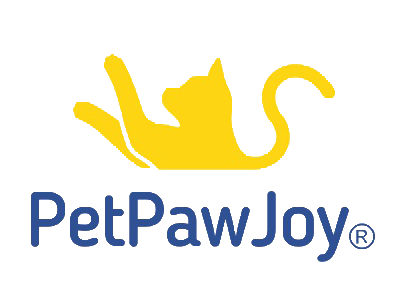In today’s fast-growing pet industry, understanding and preparing for pet product peak season, tracking pet wholesale...
Managing Seasonal Demand in Pet Product Supply Chains
Introduction: The Importance of Seasonal Planning in Pet Retail
Pet ownership is booming worldwide, and with it comes shifting demand cycles for essential and luxury pet products. Just like other consumer-driven industries, the pet sector experiences peaks around holidays, weather shifts, and special promotional events. Retailers who anticipate these cycles through accurate pet supply forecast models and by monitoring pet wholesale trends are better positioned to meet customer needs during the pet product peak season.
Understanding Seasonal Demand in the Pet Industry
The Impact of Pet Product Peak Season
Every year, pet retailers experience massive spikes in demand during holiday months like December and summer seasons when travel accessories, toys, and grooming products see an uptick. Preparing for the pet product peak season means ensuring supply chains are flexible enough to adapt quickly.
Key Pet Wholesale Trends Driving Demand
Recent pet wholesale trends show that pet parents are spending more on premium food, eco-friendly toys, and health-focused products. Retailers who align inventory strategies with these emerging demands can capture more market share during high-demand months.
Leveraging Accurate Pet Supply Forecast Models
An accurate pet supply forecast considers past sales data, consumer behavior insights, and seasonal shifts. Advanced forecasting helps prevent supply chain disruptions and ensures retailers are prepared for fluctuating demand.
tine’s Day, and Easter drive spikes in pet gift products—plush toys, festive outfits, and treats. Retailers must stock accordingly.
Weather and Seasonal Pet Care Needs
Warmer months lead to increased demand for flea and tick prevention, grooming tools, and outdoor gear. Cold weather, on the other hand, drives sales of heated bedding and nutritional supplements.
Emerging Consumer Lifestyle Shifts
As more consumers travel with pets or focus on wellness-driven products, pet wholesale trends shift accordingly, forcing supply chains to adapt in real time.
Challenges in Managing Pet Product Peak Season
Inventory Shortages and Stockouts
Failing to anticipate pet product peak season can lead to shortages, disappointing customers, and lost revenue.
Overproduction and Overstock Risks
Conversely, ordering too much stock can tie up capital and lead to storage issues, especially with perishable items like pet food.
Supply Chain Bottlenecks
Global logistics challenges—like shipping delays—can strain the ability to meet seasonal surges, making proactive planning crucial.
Providing these window perches will definitely help your cat to avoid separation, stress, and anxiety.
Best Practices for Seasonal Demand Planning
Accurate Demand Forecasting
Retailers must combine historical data, real-time sales trends, and predictive analytics to fine-tune their pet supply forecast strategies.
Building Flexible Inventory Strategies
A balanced approach—using safety stock reserves, regional distribution, and just-in-time inventory—prepares wholesalers for unexpected demand spikes.
Collaborating with Reliable Wholesale Partners
Strong partnerships ensure stable access to trending products, aligning with pet wholesale trends while reducing supply risks.
How Technology Supports Seasonal Supply Chains
AI-Powered Pet Supply Forecast Tools
Artificial intelligence can analyze consumer data, weather patterns, and economic shifts to provide accurate pet supply forecast models for upcoming peak seasons.
Warehouse Automation and Efficiency
Robotics and smart shelving reduce order processing time, helping wholesalers keep up with pet product peak season demand.
Data Analytics in Predicting Seasonal Shifts
Analytics platforms detect changes in buying behavior, helping businesses align stock with pet wholesale trends.
Wholesale Strategies to Align with Pet Wholesale Trends
Bulk Buying During Off-Peak Periods
Purchasing products in bulk during off-season allows wholesalers to cut costs and prepare for pet product peak season demand.
Diversifying Product Mix for Seasonal Appeal
Offering seasonal products such as cooling mats, holiday-themed toys, or travel kits can align inventory with pet wholesale trends.
Strengthening Supplier Relationships
Close collaboration with suppliers ensures retailers can quickly scale up production when forecasts predict rising seasonal demand.
Case Study: Successful Seasonal Demand Management
A leading North American pet retailer improved its seasonal planning by adopting an AI-powered pet supply forecast system. By analyzing sales data, weather trends, and consumer insights, the company reduced stockouts by 35% during the pet product peak season while cutting overstock costs by 20%.
Future Outlook: Pet Product Peak Season Trends
Looking ahead, pet wholesale trends suggest growing demand for organic foods, subscription-based pet supply services, and eco-conscious packaging. Retailers who integrate these insights into their pet supply forecast models will remain competitive.
Frequently Asked Questions (FAQs)
Q1: What is the biggest challenge during the pet product peak season?
The biggest challenge is balancing supply with demand—avoiding both shortages and excess stock.
Q2: How do pet wholesale trends impact seasonal demand?
They reveal emerging consumer preferences, helping retailers stock the right products at the right time.
Q3: What role does technology play in pet supply forecasts?
Technology improves accuracy by using real-time data and AI models to predict future demand.
Q4: How can wholesalers prepare for seasonal spikes in pet supply chains?
By building flexible inventory strategies, monitoring pet wholesale trends, and collaborating with reliable suppliers.
Q5: Why is forecasting important in pet retail?
An accurate pet supply forecast prevents stockouts, reduces waste, and maximizes profitability.
Q6: What future changes are expected in pet product supply chains?
Sustainability, automation, and digital supply chain platforms will shape the future of pet product peak season planning.
Conclusion: Building a Resilient Seasonal Supply Chain
Managing pet product peak season demand is both a challenge and an opportunity. By staying on top of pet wholesale trends and leveraging an accurate pet supply forecast, large pet retailers and wholesalers can avoid disruptions, meet customer needs, and scale their businesses successfully. The future belongs to businesses that adapt quickly, plan strategically, and invest in resilient supply chain technologies.












